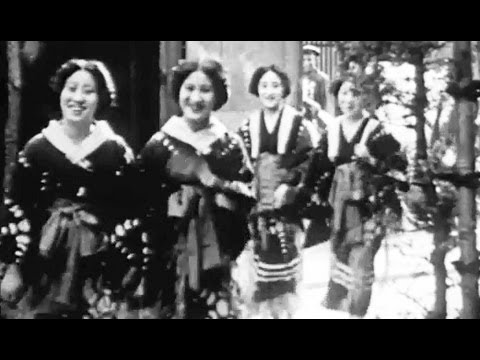Manchuria under Japanese Control: “Manchukuo: The Newborn Empire” circa 1937 Beaux Art Productions
NEW VERSION with improved video & sound:
more at
The Japanese puppet state of Manchukuo, located in what is now Manchuria, China, is described in the late 1930s.
Public domain film from the Prelinger Archive, slightly cropped to remove uneven edges, with the aspect ratio corrected, and mild video noise reduction applied.
The soundtrack was also processed with volume normalization, noise reduction, clipping reduction, and/or equalization (the resulting sound, though not perfect, is far less noisy than the original).
Manchukuo (simplified Chinese: 满洲国; traditional Chinese: 滿洲國; pinyin: Mǎnzhōuguó; literally “Manchu state”) or Manshū-koku (Japanese: 満州国) was a puppet state in modern northeast China and Inner Mongolia, governed under a form of constitutional monarchy. The area, collectively known as Manchuria, was designated by China’s erstwhile Qing Dynasty as the “homeland” of the ruling family’s ethnic group, the Manchus. In 1931, Japan seized the region following the Mukden Incident and installed a pro-Japanese government one year later with Puyi, the last Qing emperor, as the nominal regent and emperor. Manchukuo’s government was abolished in 1945 after the defeat of Imperial Japan at the end of World War II. The territories formally claimed by the puppet state were first seized in the Soviet invasion of Manchuria in August 1945, and then formally transferred to Chinese administration in the following year.
Manchus formed a minority in Manchukuo, whose largest ethnic group were Han Chinese. The population of Koreans increased during the Manchukuo period, and there were also Japanese, Mongols, White Russians and other minorities. The Mongol regions of western Manchukuo were ruled under a slightly different system in acknowledgement of the Mongolian traditions there. The southern part of the Liaodong Peninsula was ruled by Japan as the Kwantung Leased Territory…
As a direct result of the Russo-Japanese War (1904/05) Japanese influence replaced Russia’s in Inner Manchuria. In 1906, Japan laid the South Manchurian Railway to Port Arthur (Japanese: Ryojun). Between World War I and World War II Manchuria became a political and military battleground between Russia, Japan, and China…
After the Japanese invasion of Manchuria in 1931, Japanese militarists moved forward to separate the region from Chinese control… To create an air of legitimacy, the last Emperor of China, Pu-Yi, was invited to come with his followers and act as the head of state for Manchuria…
On 18 February 1932 the Manchu State (Manchukuo, Pinyin: Mǎnzhōuguó) was proclaimed and recognized by Japan on 15 September 1932 through the Japan-Manchukuo Protocol. The city of Changchun, renamed Hsingking (Pinyin: Xinjing) (新京, literally “New Capital”), became the capital of the new entity. Chinese in Manchuria organized volunteer armies to oppose the Japanese and the new state required a war lasting several years…
The Japanese initially installed Puyi as Head of State in 1932, and two years later he was declared Emperor of Manchukuo with the era name of Kangde (“Tranquility and Virtue”; Wade-Giles: Kangte). Manchukuo thus became the Great Manchurian Empire, sometimes termed Manchutikuo (Pinyin: Mǎnzhōu Dìguó). Zheng Xiaoxu served as Manchukuo’s first prime minister until 1935, when Zhang Jinghui succeeded him… real authority rested in the hands of the Japanese military officials… All of the Manchu ministers served as front-men for their Japanese vice-ministers, who made all decisions.
In this manner, Japan formally detached Manchukuo from China in the course of the 1930s. With Japanese investment and rich natural resources, the area became an industrial powerhouse.
In 1935, Manchukuo bought the Chinese Eastern Railway from the Soviet Union…
Before World War II, the Japanese colonized Manchukuo and used it as a base from which to invade China…
On 8 August 1945, the Soviet Union declared war on Japan, in accordance with the agreement at the Yalta Conference, and invaded Manchukuo from outer Manchuria and Outer Mongolia…
From 1945 to 1948, Manchuria (Inner Manchuria) served as a base area for the People’s Liberation Army in the Chinese Civil War against the Kuomintang (KMT)… Many Manchukuo army and Japanese Kantogun personnel served with the communist troops during the Chinese Civil War against the Nationalist forces. Most of the 1.5 million Japanese who had been left in Manchukuo at the end of World War II were sent back to their homeland in 1946-1948 by U.S. Navy ships in the operation now known as the Japanese repatriation from Huludao…

